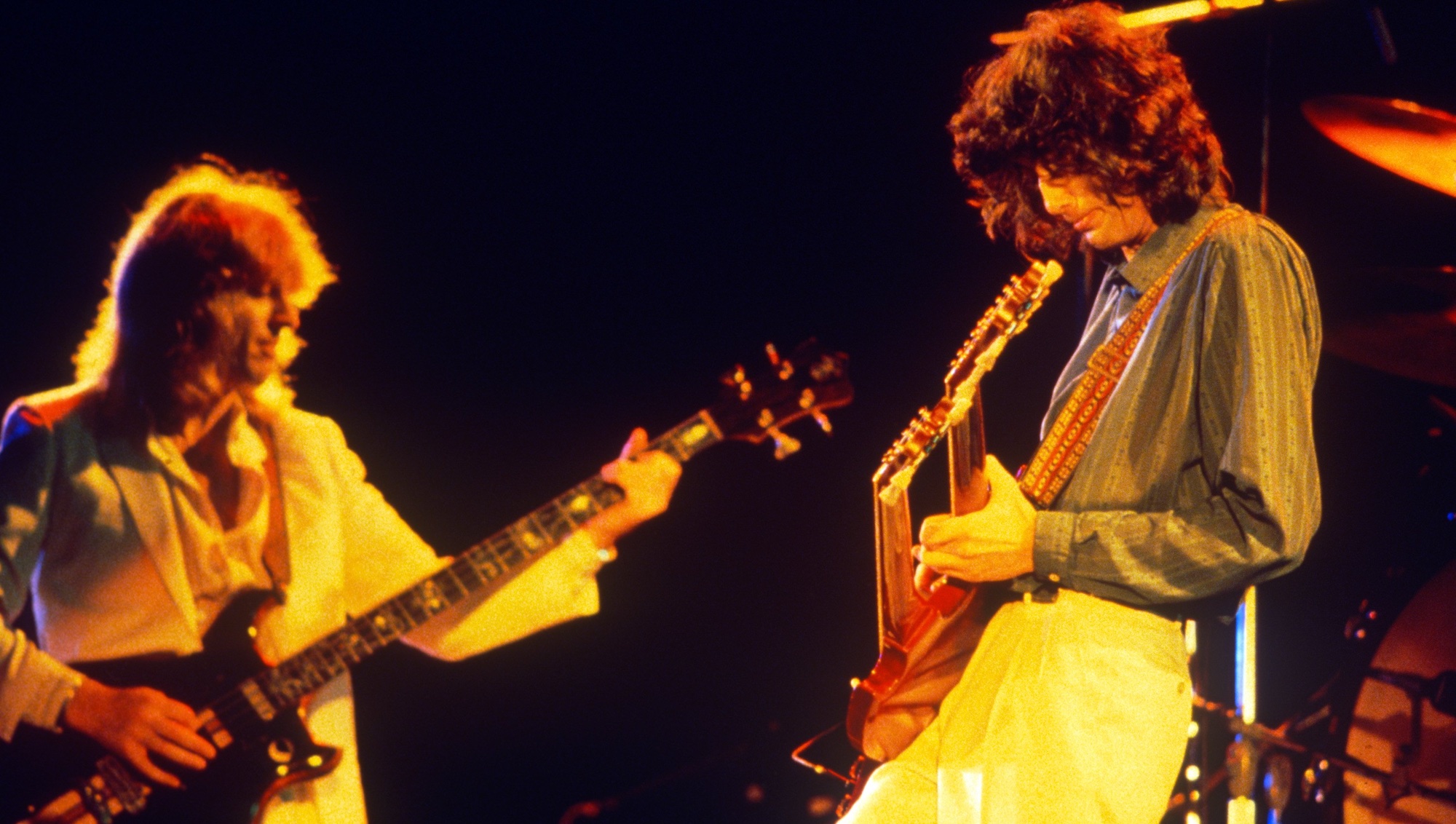“It came from a great deal of eye contact between the two of us”: When it came to Led Zeppelin's most powerful riffs, sometimes what didn't get played was more important than what did, says John Paul Jones
They may have played a huge role in bringing heaviness and triple-digit onstage decibel counts to rock, but as bassist John Paul Jones explains, Zeppelin were also masters of silence

Starting in 1996, Guitar World was honored to publish a handful of lesson columns authored by Led Zeppelin bassist John Paul Jones. The following is one of these columns. It has been edited in certain instances for use online.
Last time, we were discussing how octave-doubled single-note riffs and shifting rhythms can be used to create heavy-sounding “stomp grooves,” and we cited my Black Dog riff as an example of how effective this type of playing can be in a power trio lineup.
This month, I'd like to continue with this topic and offer a couple of examples of stomp grooves that employ another musical element, silence, to add impact and drama to a riff.
Silence, when used at the right times, can be an extremely effective compositional tool. It can help provide contrast, punctuation, and a feeling of release to a melody or accompaniment.
A good example of an octave-doubled single-note “stomp groove” that uses quite a bit of silence is the riff that begins The Ocean. I played this riff fingerstyle.
As with many other Zeppelin riffs, I originally came up with this figure on the electric bass guitar while jamming with John Bonham. It's one of those tricky parts that was conceived using a great deal of eye contact between the two of us.
Notice the pervasive use of silence in the riff, especially the gaping hole created by the half-note rest on beats 3 and 4 of the first bar. These rests helped provide the syncopation and allowed the riff to breathe while Bonzo continued to lay down the beat. (Page's verse riff in 4/4, the one comprised of the chords D5-05-A5-G5-A5-D5, also employs rests very effectively).
All the latest guitar news, interviews, lessons, reviews, deals and more, direct to your inbox!
Also note that the second bar of the riff is in 7/8 meter. Dropping half a beat from the two-bar phrase sounded good to our ears, so we just went ahead and did it. We actually wrote a lot of riffs and grooves that way – by experimenting with different variations on parts until something clicked.
Another good example of this type of writing is the intro/verse riff to The Wanton Song, which also came to me whilst jamming with Bonzo. (I played this bassline fingerstyle as well).
Notice that beats 1 and 2 in the first measure are comprised entirely of 16th notes (the G octaves), while beats 3 and 4 are completely empty (except, of course, for the drums). The last 16th note of beat 2 (the high G) is accented to enhance the feeling of syncopation and make the “hole” that immediately follows on beat 3 sound more dramatic.
You may recall that during beats 3 and 4 of the fourth bar of this riff Page plays a punchy chord fill (F-F#) with the drums. I felt that it was more effective for me not to double the F-F# walk-up and instead lay out until beat 1 of the next bar. Keep in mind that what you don't play is just as important as what you do play.
For the break riff, I used the G minor-blues scale (G-Bb-C-Db-D-F) and a lot of syncopated 16th-note rhythms and rests to help create a funky, powerful-sounding phrase with lots of “kicks.”
In the final bar (the descending part of the phrase), each G-string note is repeated an octave lower on the A string. Playing the notes this way – in alternating octaves – really helped accentuate the syncopation of the line and gave it a very angular and interesting contour.
- This lesson originally appeared in the January 1997 issue of Guitar World. Subscribe and save.
The bassist for Led Zeppelin, one of rock's greatest bands, John Paul Jones is universally recognized as one of the greatest bassists of all time. He's also a highly regarded multi-instrumentalist, arranger, and producer.
You must confirm your public display name before commenting
Please logout and then login again, you will then be prompted to enter your display name.


